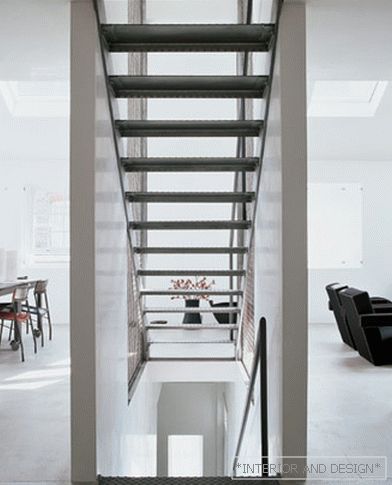Here you will learn what liquid wallpaper is, what advantages and disadvantages the owners will face with such a home decoration, how inexpensive it is to create liquid wallpaper with your own hands, as well as get acquainted with the photo of professional decoration and design of the bedroom, living room and children's room!
The content of the article- What is liquid wallpaper?
- “For” and “against” the decor with liquid wallpaper
- How to make a liquid wallpaper at home do it yourself
- Liquid Wallpaper Technology
- Features of the application of liquid wallpaper
- Features of drawing drawings and patterns
- Care for liquid wallpaper
- Where to apply this finish
- Living room and bedroom
- Children's room
- Photos in the interior
The choice of finishing materials is becoming more and more varied, from decorative plaster to liquid and glass fiber, so it is becoming increasingly difficult to choose an alternative to the paper roll classics. We will try without deviation to advertise the fair to understand all the advantages and disadvantages of liquid wallpaper, methods of their application, and options for their design of various premises. First, find out what they are.
What is liquid wallpaper?
There is no clear opinion on what is the difference between decorative plaster and liquid wallpaper. Some believe that liquid wallpaper is a kind of finishing plaster, others, on the contrary, that liquid wallpaper is a mixture that combines the properties of plaster and paper wallpaper. One thing is clear: you should not identify these concepts - they meet different requirements, have different textures and are applied differently to the surface.
In the composite base of liquid wallpaper is cellulose fiber and glue. Depending on the decor, cotton and silk fibers, dyes, as well as various relief elements such as wood chips, mica, algae and plants, sand and much more can be added to the composition.
By the way, their composition determines the first and foremost advantage of liquid wallpaper - a huge variety of colors, patterns, textures, so that they can be used as decoration for almost all areas of a house, office or public space.
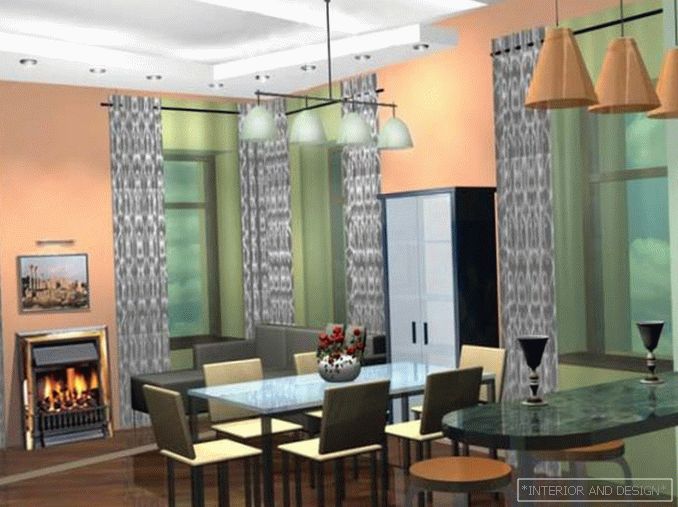
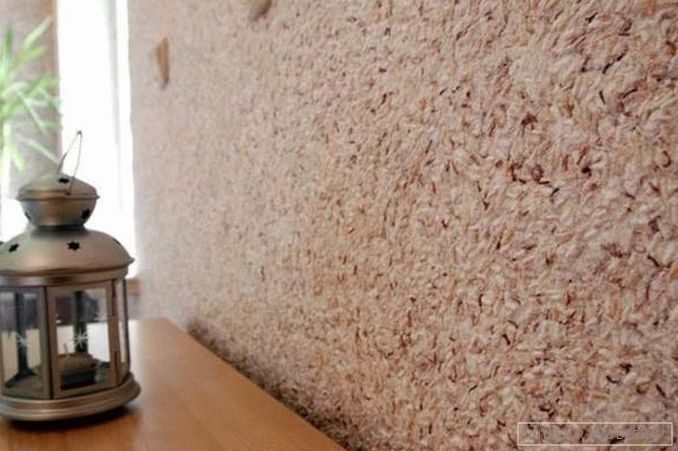
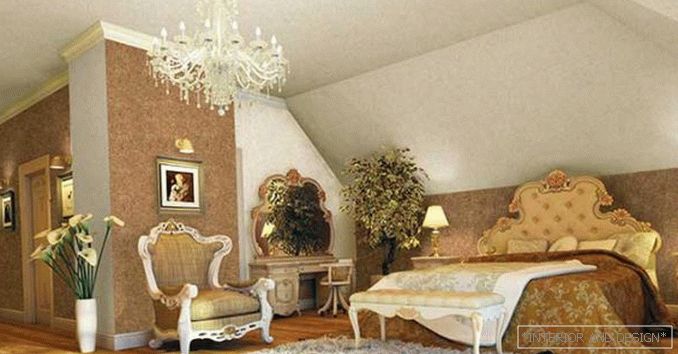
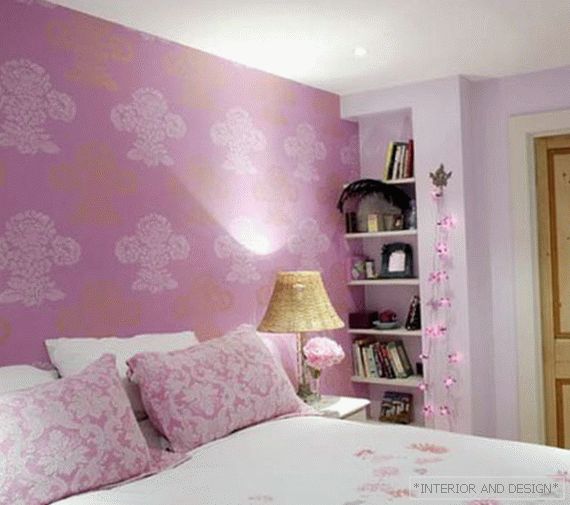
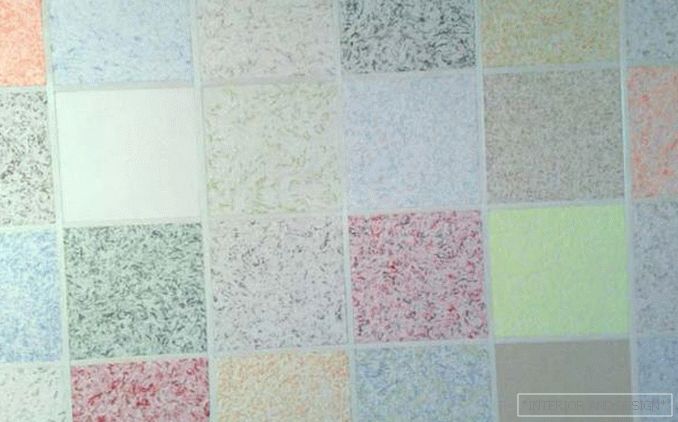

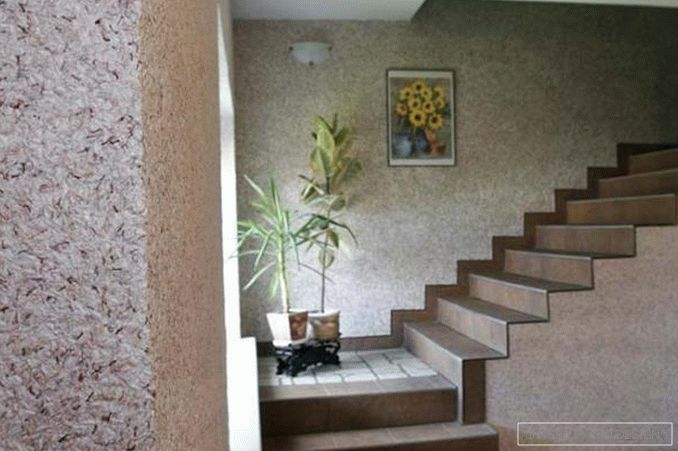
“For” and “against” the decor with liquid wallpaper
In order to correctly weigh all the pros and cons of liquid wallpaper, we suggest referring to the comparative table and clearly see how many characteristics lay on the scales “for” and how many are against.
| Benefits | disadvantages |
|---|---|
| Resistance to frost and abrupt change t °, can be used in poorly heated rooms. | They are afraid of moisture, which facilitates their dismantling, but does not allow using them in the bathroom at all. |
| Do not fade in the sun, unlike paper wallpaper. | Only dry cleaning (vacuum cleaner or dry cloth), so it is undesirable to finish them quickly contaminated by grease and soot from the kitchen walls. |
| When applied, the surface is corrected (cracks, holes, etc.), so no preliminary surface treatment with plaster is required (of course, if we are not talking about very uneven surfaces). | Relatively high price compared to regular wallpaper |
| Easy to apply on the wall and also easy to dismantle. | |
| Isolate sound, warm. | |
| Absolutely environmentally friendly, non-toxic, do not emit hazardous substances. | |
| Do not accumulate dirt and dust | |
| The walls, unlike vinyl, do not accumulate moisture, do not dampen and do not create the greenhouse effect in the apartment. | |
| They can be used on hard-to-reach, non-standard surfaces, i.e. where paper wallpaper will have to cut, glue, embed decorative elements. |
Obviously, the advantages of liquid wallpaper far outweigh the disadvantages, but not so simple.
Consider the pros. When leaning towards this type of finish, consider how smooth your walls are, whether they require pre-treatment and whether differences and unevenness in the composition of the surface will be noticeable. After all, liquid wallpaper can only smooth out minor flaws, but not even align the walls, as could make plaster or drywall.
We turn to the minuses, especially the question of cleaning. On the one hand, wet cleaning of liquid wallpaper simply removes them, so it is simply impossible to remove contamination with moisture. On the other hand, if for some reason you have soiled a piece of the wall, you can easily dissolve the wallpaper mixture and apply it to the contaminated area. It will be inconvenient only in a place where the walls are constantly polluted (for example, in the kitchen), in all other cases it is much more convenient and aesthetic than cutting out a piece of soiled wallpaper and sticking a new one.
Along with paper and vinyl wallpaper, liquid wallpaper has a rich assortment of colors and textures, so you can embody all of your design abilities and combine several types of blends in an intricate pattern or picture, whatever you could achieve using regular paper wallpaper.
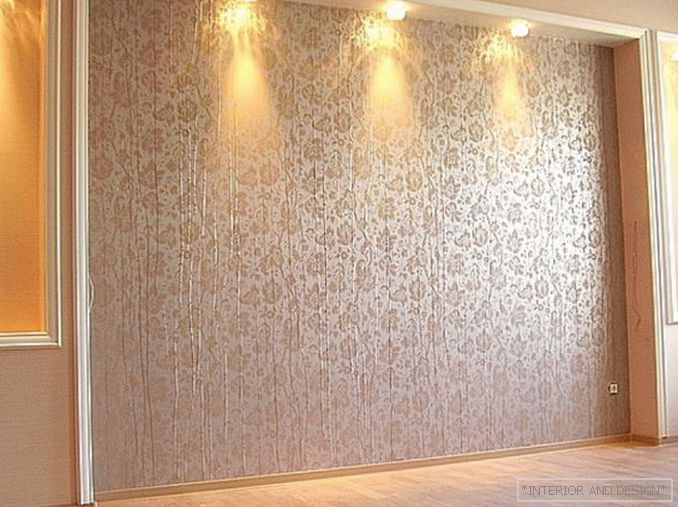
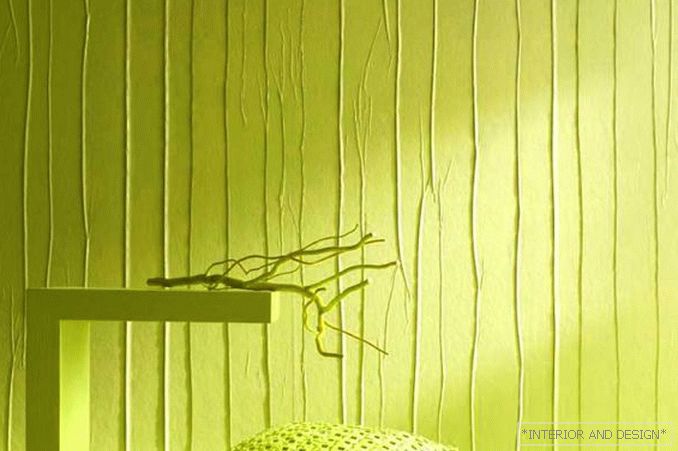
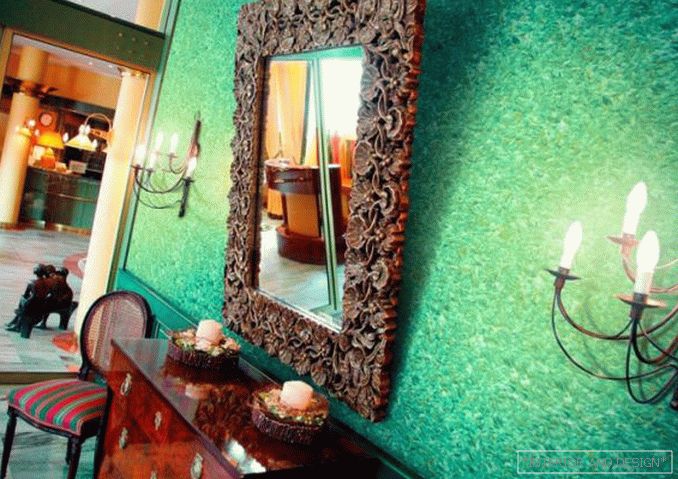

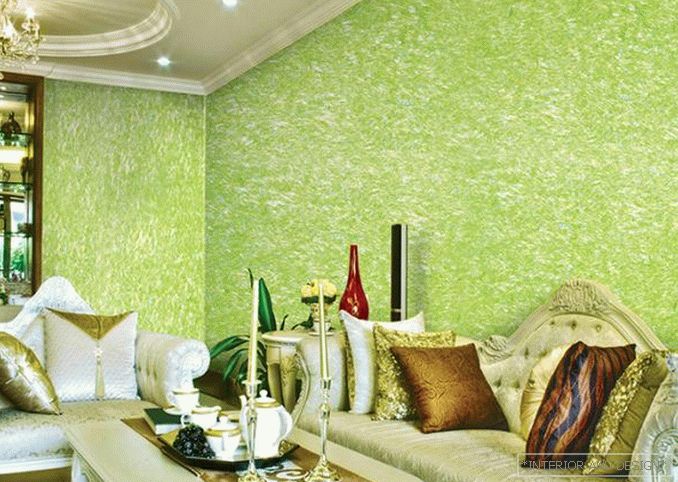
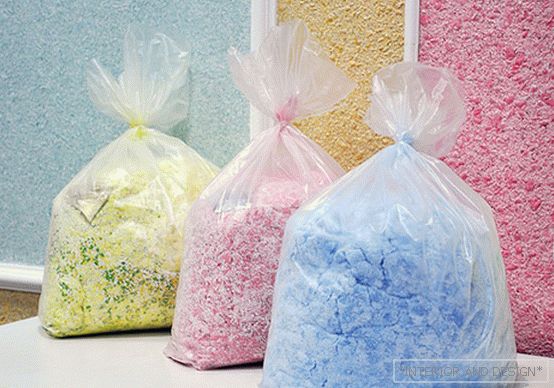
How to make a liquid wallpaper at home do it yourself
Before you live hacking making liquid wallpaper at home, and this method proves that the lack of "high price" is very relative. If you apply a little wit and creativity, you get this option:
- We take the paper (even the usual A4 will do; even dirty drafts can be used). We cut it in a chaotic manner, the smaller, the better. On average, pieces of 3-4 cm.
- Fill it with water in the tank, in which our mixture will be in the future, i.e. according to the principle “this bucket is not a pity”. Water should completely cover the paper, but not in excess, so that the solution does not turn out to be too liquid. Leave it for 2-3 hours until the paper is completely sodden.
- With a construction mixer, we grind the soaked sheets into the most homogeneous mixture.
- Add color, plaster, PVA glue (proportions to 1 sheet of paper - 1 teaspoon of gypsum and 5 ml of glue), mix again. You can add decorative elements - chips, glitter, etc.
- We apply with an iron spatula on a dry prepared surface with a layer of 3-4 mm, let it dry.
Such a simple master class will allow you to originally finish the walls for almost free of charge. You can also learn more about this from the video:
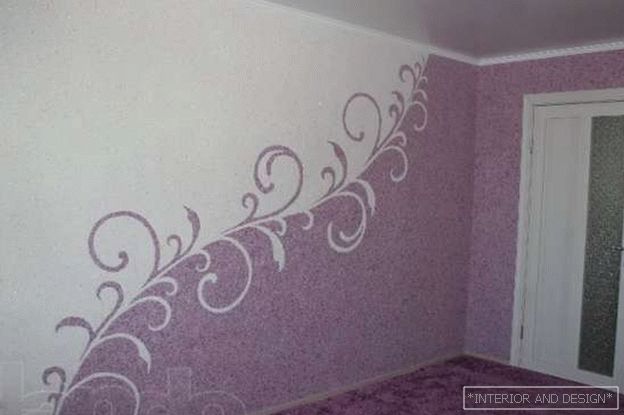
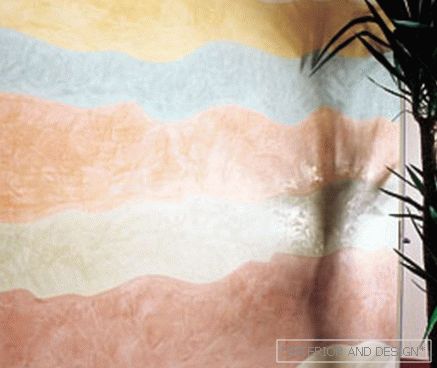
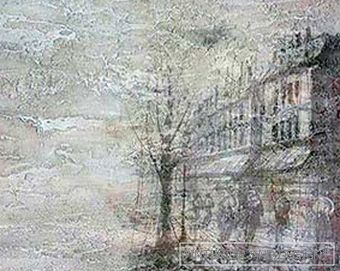

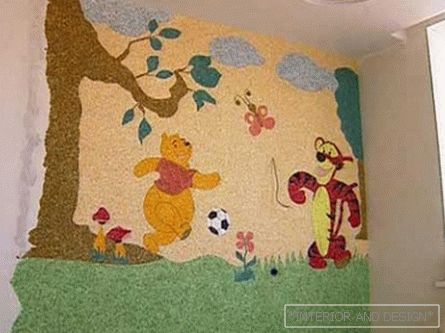
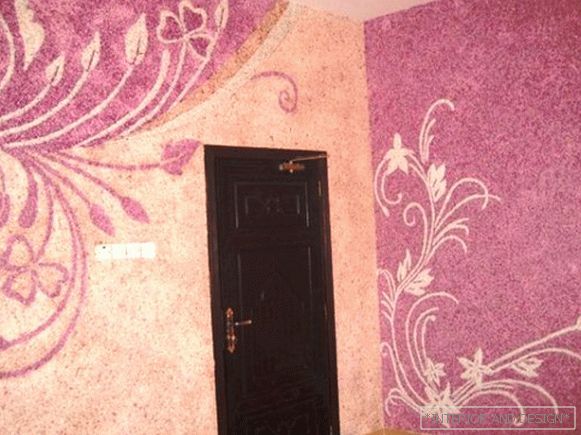
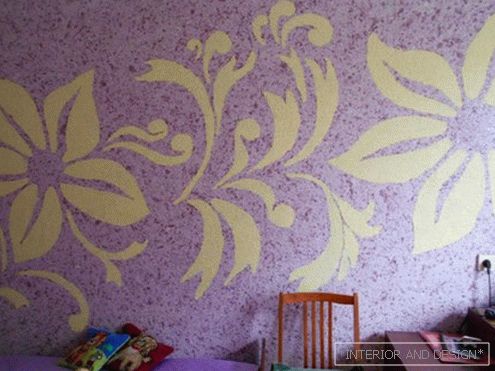
Care for liquid wallpaper
Remember that you can take care of liquid wallpaper only with the help of dry cleaning, no wet rags or scrubbing of stains with brushes!
If you have a problem with pollution, gently wet the damaged area, remove the old layer with a sharp knife or spatula and apply a new layer of the mixture of the same color and structure. Initially, the updated piece will be different in color, but after drying you will not notice the difference.
Where to apply this finish
Liquid wallpaper is well suited for finishing the ceiling and walls of the bedroom, children's room, living room or corridor, it is not recommended to use them only in the bathroom (with high humidity) and the kitchen (where there is a high risk of contamination).
Living room and bedroom
Liquid wallpaper is ideal for decoration of the bedroom and living room, as with the aesthetic side, and for tactile sensations. Pleasant to the touch and interesting texture is the finish under the silk plaster - liquid wallpaper, which contains silk and cotton fiber. They will look very cozy with them, as if covered with textiles.
For greater originality in the mixture can add a little sparkles or even fluorescent paint, causing a gentle shimmer with light and glow in the dark.
You can also select one of the walls in an original way (in the living room - this is the wall on which the view from the sofa will rest, in the bedroom - this is the area at the head of the bed) with textured plaster or liquid wallpaper with a large heterogeneous texture.
Golden Venetian plaster (“marble dust”) looks rich and stylish. It creates a unique deep light of the walls, a cozy glow, the play of light and shade, along with barely visible cracks and streaks. No one will remain indifferent to such a design living room or bedroom.
Adding granules and flock will allow you to create three-dimensional images and revive the monochromatic surface of the walls. In addition, this design trick is used to visually expand the room.
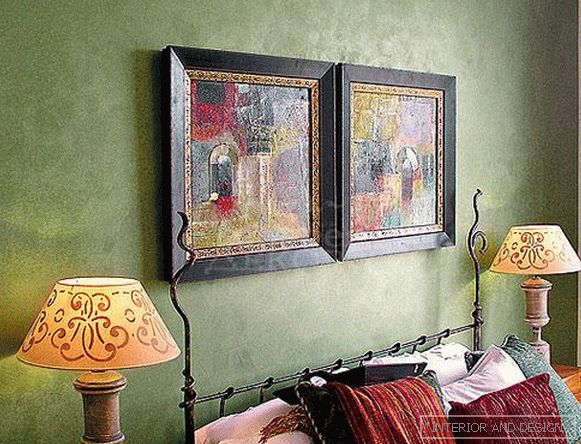
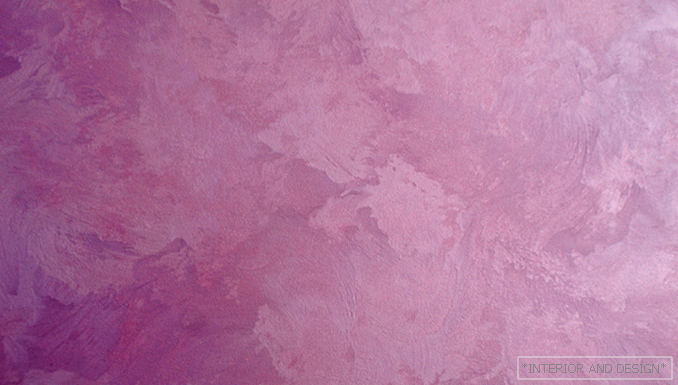
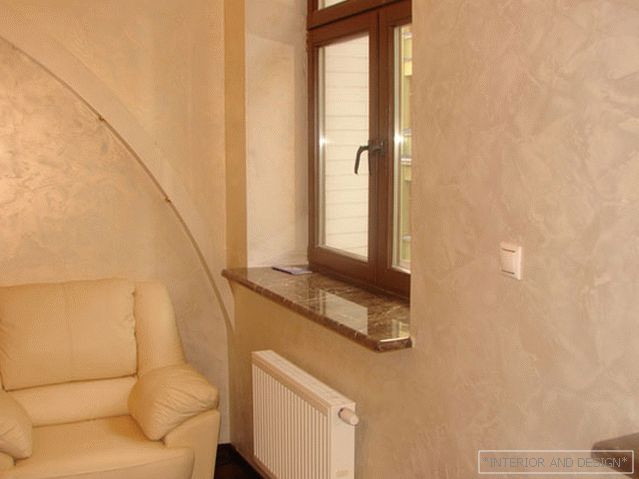
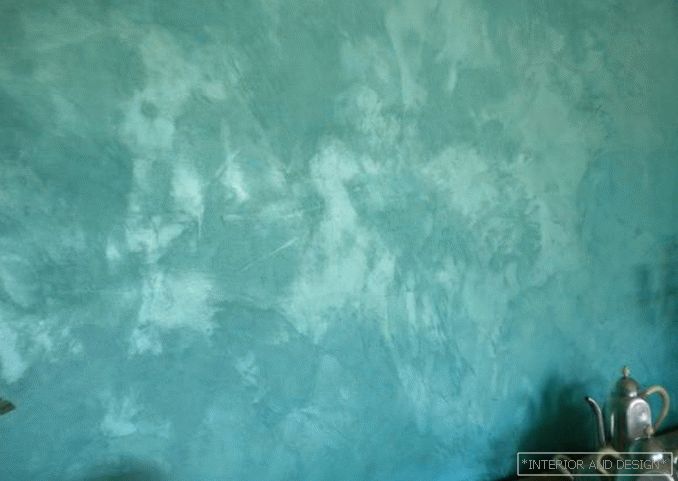

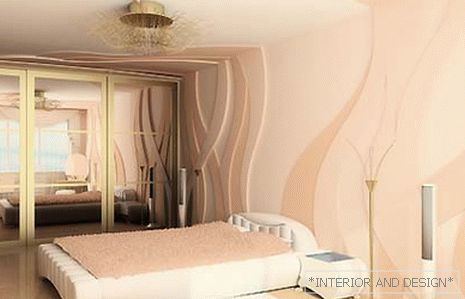
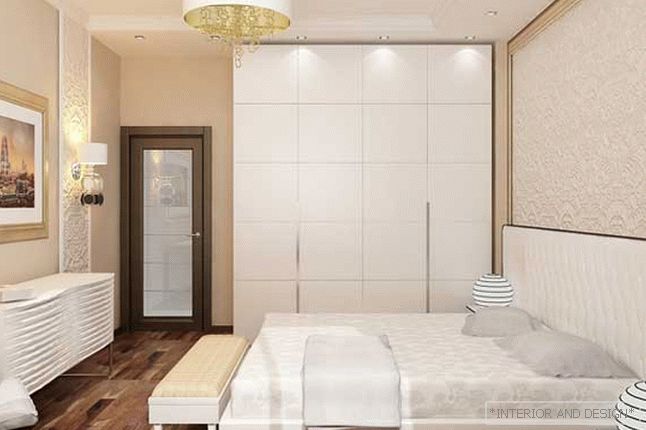
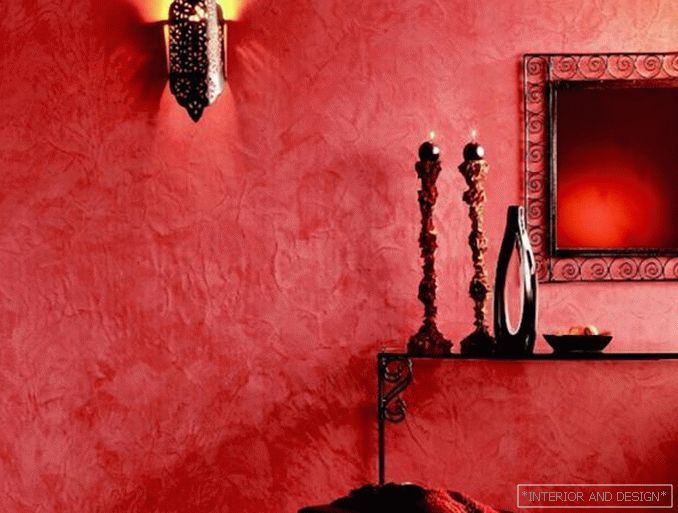
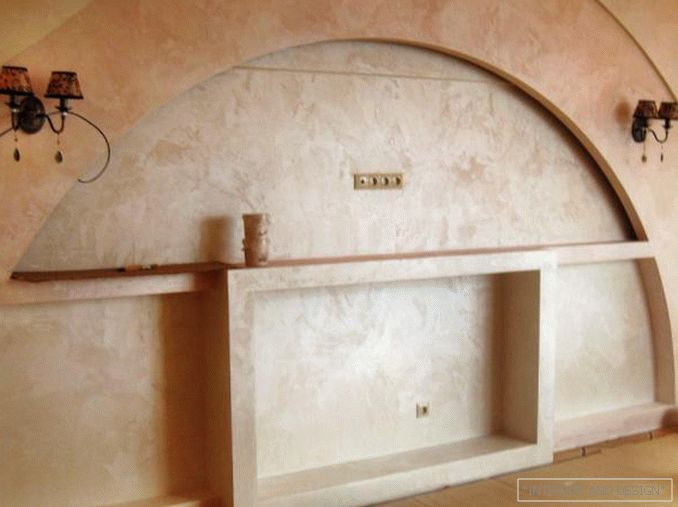

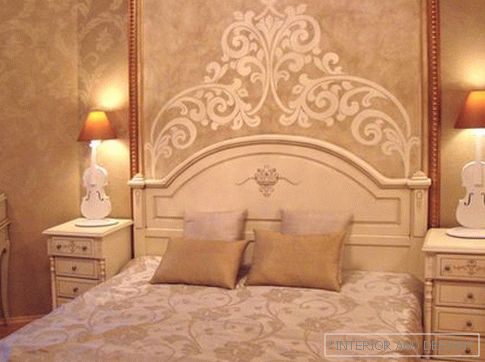
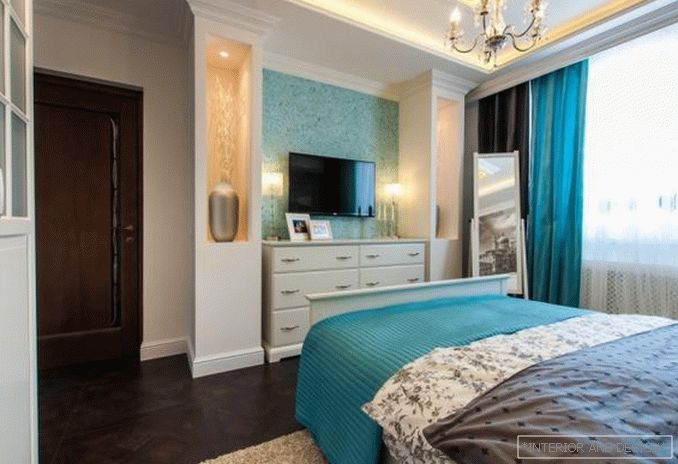
Children's room
How else can you originally design a nursery, except with the help of liquid wallpaper. This room:
- Safer - the walls here breathe, do not create the greenhouse effect and do not accumulate dust;
- More interesting - unlike the paper alternative, here you create any favorite picture yourself and you can even invite your child to work. The room executed by liquid wall-paper will look much cozier, than painted by paint. Revive it with decorative elements, sparkles, fluorescent paint.
- Always ready for children's experiments and “surprises”. If you do not always clean the “children's creativity” from ordinary wallpaper, in the case of liquid wallpaper you can always close up the wall painted by the child.
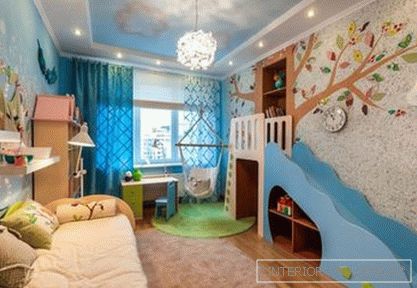

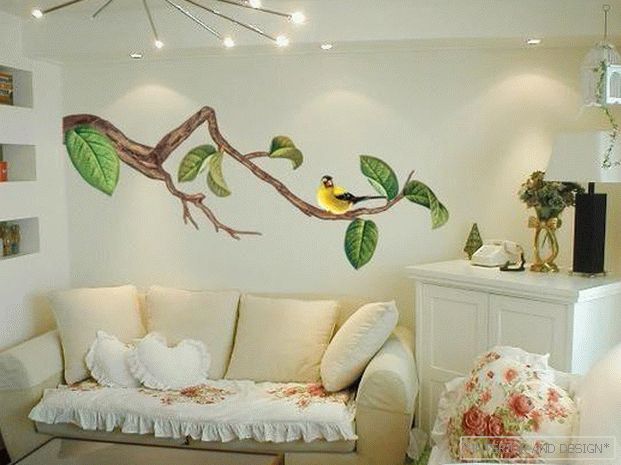
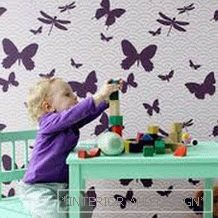


Photos in the interior
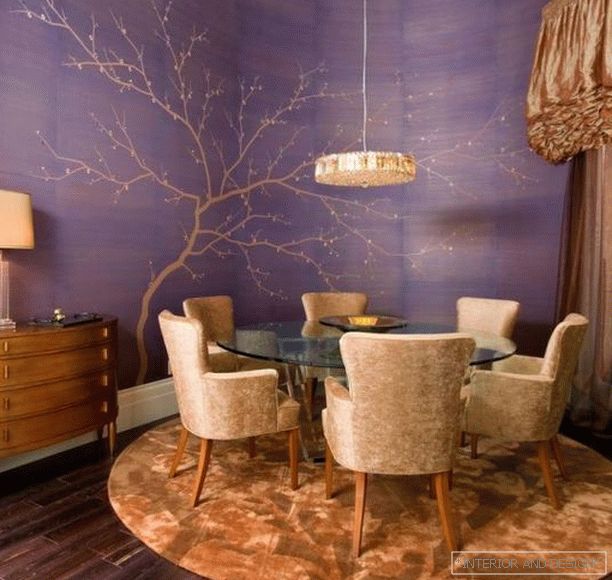
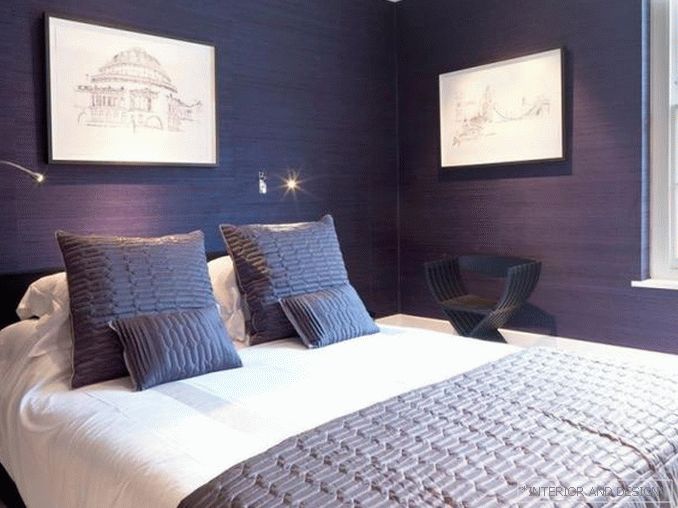

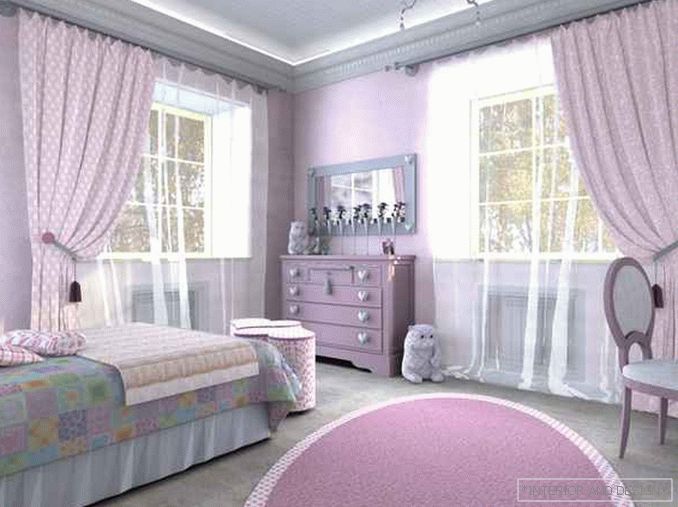
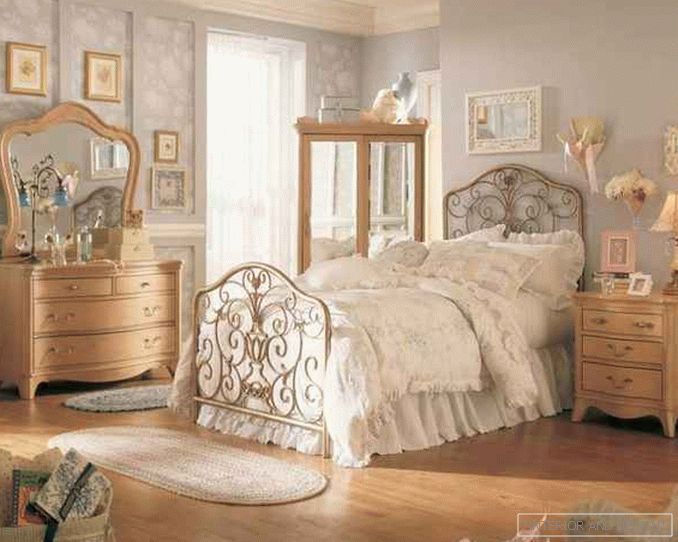


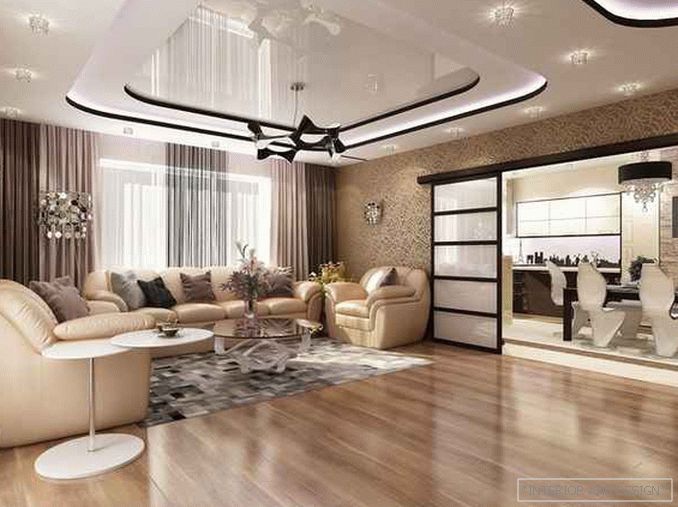
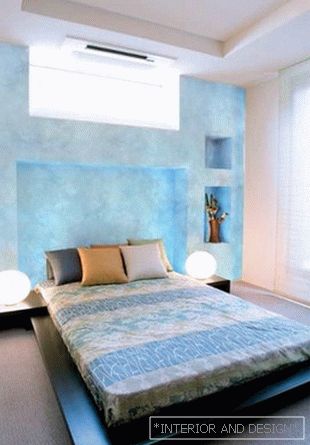
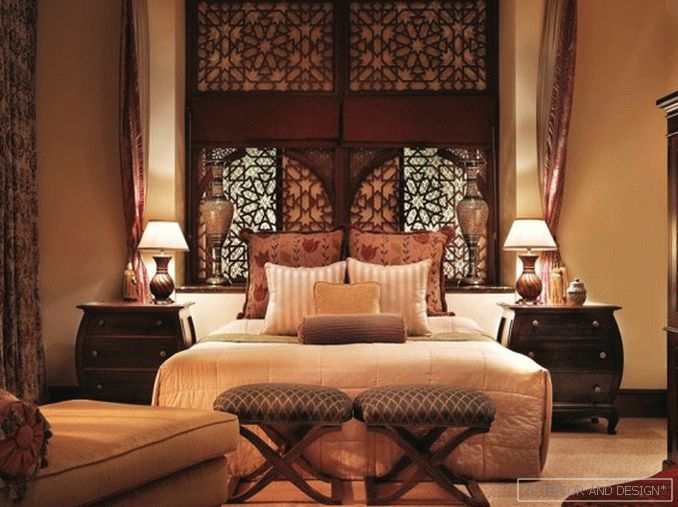
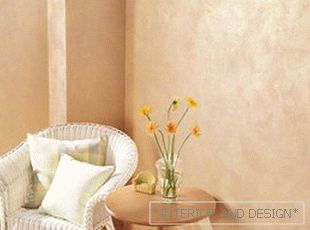
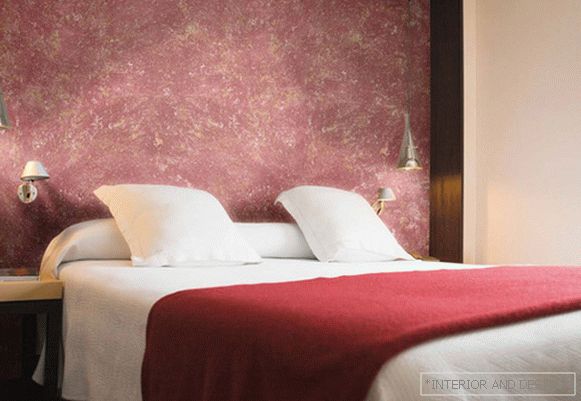
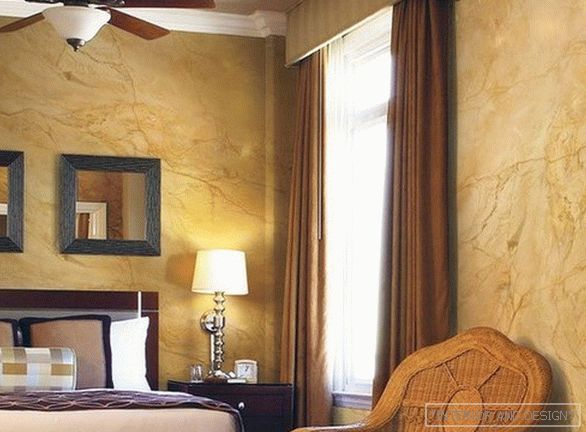
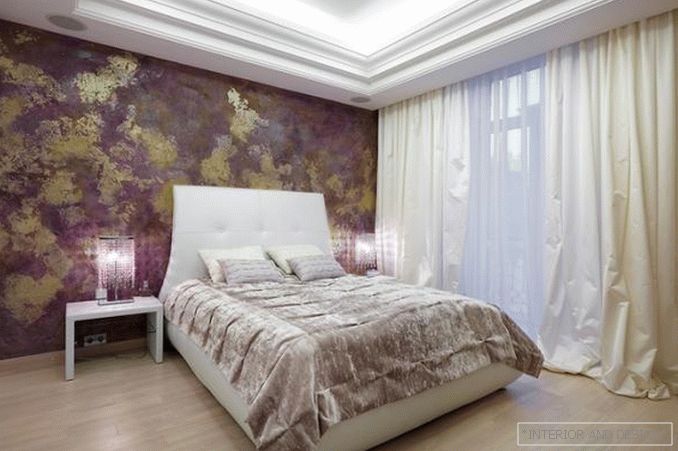
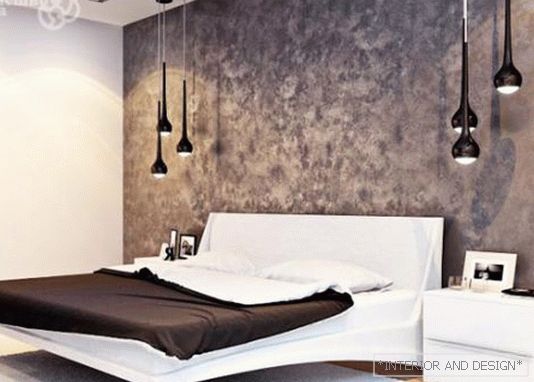
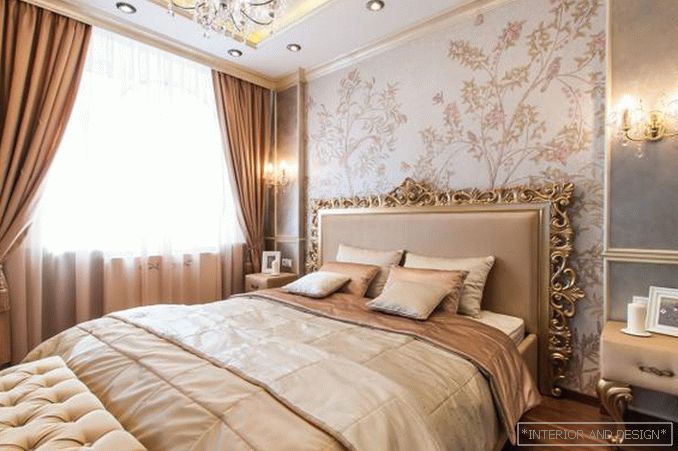
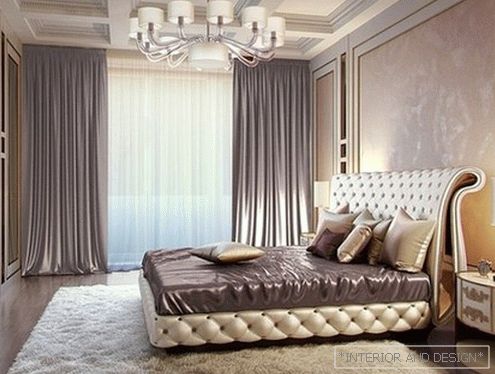
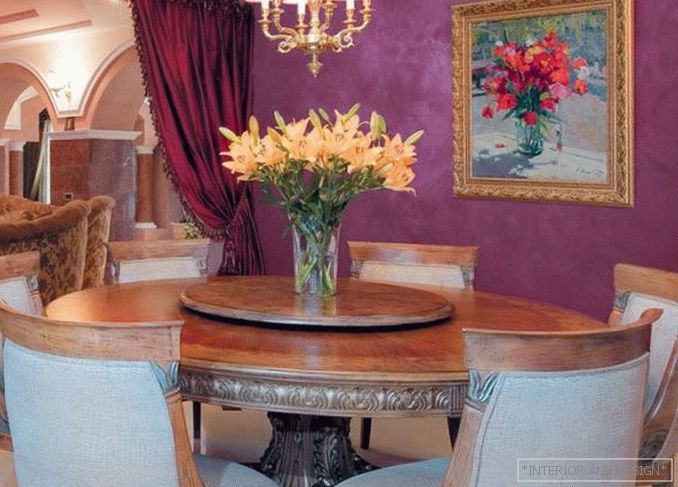
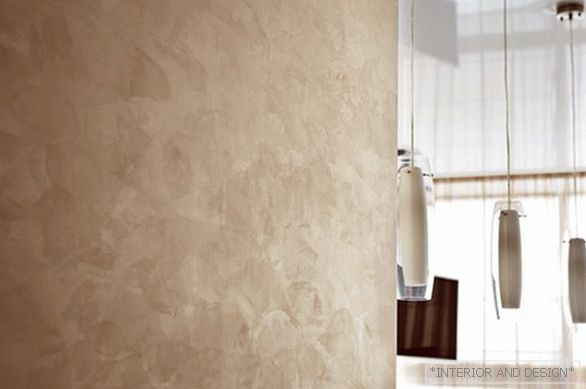
Do not forget to read our detailed article on the use in the interior of wallpaper for painting.


